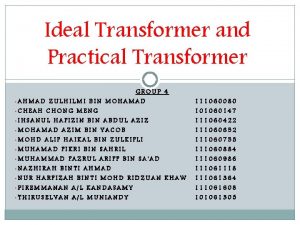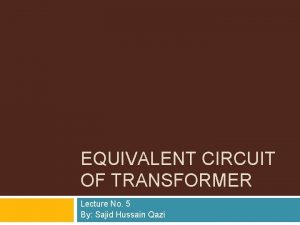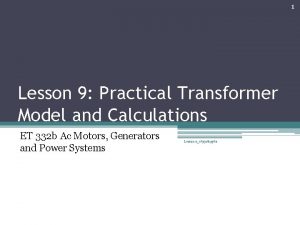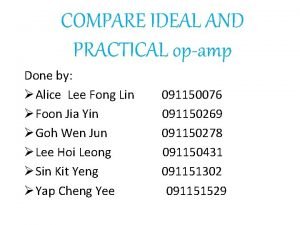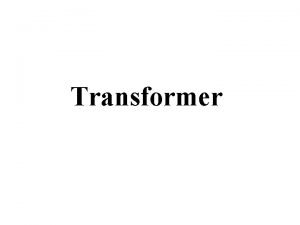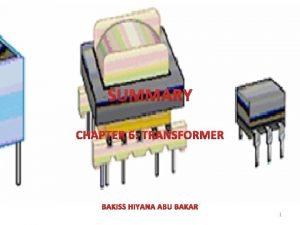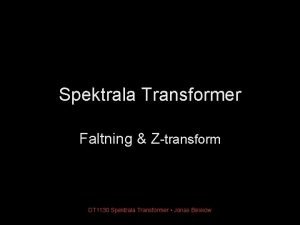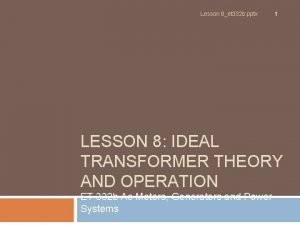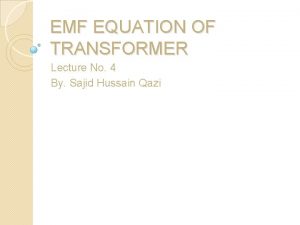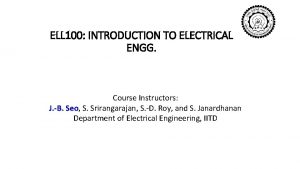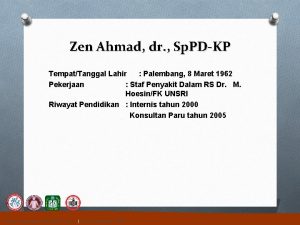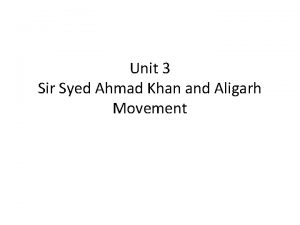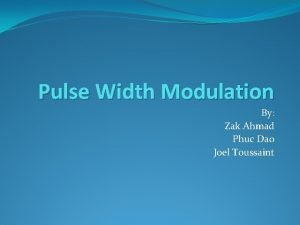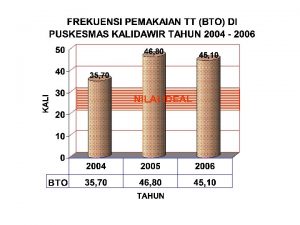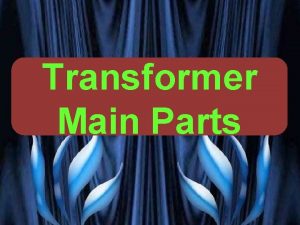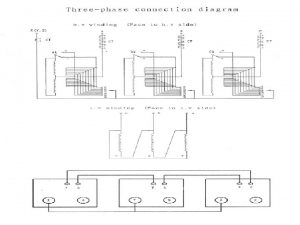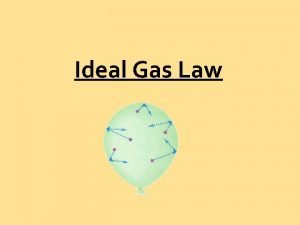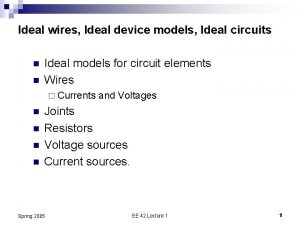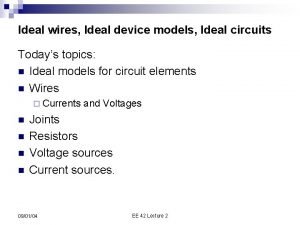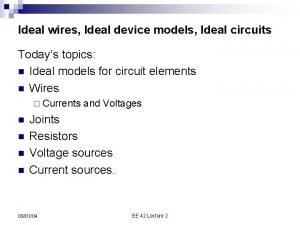Ideal Transformer and Practical Transformer GROUP 4 AHMAD


















- Slides: 18

Ideal Transformer and Practical Transformer GROUP 4 • AHMAD ZULHILMI BIN MOHAMAD • CHEAH CHONG MENG • IHSANUL HAFIZIN BIN ABDUL AZIZ • MOHAMAD AZIM BIN YACOB • MOHD ALIF HAIKAL BIN ZULKIFLI • MUHAMAD FIKRI BIN SAHRIL • MUHAMMAD FAZRUL ARIFF BIN SA'AD • NAZHIRAH BINTI AHMAD • NUR HARFIZAH BINTI MOHD RIDZUAN KHAW • PIREMMANAN A/L KANDASAMY • THIRUSELVAN A/L MUNIANDY 111060080 101060147 111060422 111060652 111060755 111060884 111060986 111061118 111061364 111061608 101061305

Ideal Transformer

Ideal Transformer �Primary and secondary windings has no resistance. �All magnetic flux is confined to the core, there is no leakage flux. �Permeability μr of the core is infinitely large. In other words, to establish flux in the core vanishingly small (or zero) current is required. � The core loss is zero.

Ideal Transformer � 2 windings – wrapped around magnetic core �Phasor voltages E 1 and E 2 across windings �Phasor currents I 1 (I 2) entering (leaving) winding 1 (2) with N 1 (N 2) turns �Φc = phasor flux, Hc = magnetic field intensity phasor �Ac = core cross sectional area, lc = mean length of magnetic circuit, c = constant magnetic permeability.

Ideal Transformer � We consider a lossless transformer with an input (primary) winding having Np turns and a secondary winding of Ns turns. � The relationship between the voltage applied to the primary winding vp(t) and the voltage produced on the secondary winding vs(t) is Here a is the turn ratio of the transformer

Ideal Transformer The relationship between the primary ip(t) and secondary is(t) currents is : In the phasor notation: The phase angles of primary and secondary voltages are the same. The phase angles of primary and secondary currents are the same also. The ideal transformer changes magnitudes of voltages and currents but not their angles.

Ideal Transformer Relationships �v 1(t)/N 1=v 2(t)/N 2 or v 2(t) =(N 2/N 1)v 1(t)=n v 1(t) �N 1 i 1(t)=- N 2 i 2(t) or i 2(t)=(-N 1/N 2)i 1(t)=-i 1(t)/n

Ideal Transformer

PRACTICAL TRANSFORMER

Practical Transformer � The windings have resistance. � The core permeability µc is finite. � The magnetic flux is not entirely confined to the core. � There are real and reactive power losses in the core.

Practical Transformer

Practical Transformer �Neglecting exciting current

Practical Transformer �Neglecting exciting current and I 2 R winding lost

Losses That Occur in A Practical Transformer �Real transformers have winding resistance, resistance in series with each winding, resulting in less than idea secondary voltage. �Hysteresis losses are core losses due to the continuous reversal of the magnetic field due the changing direction of the primary current.

Losses That Occur in A Practical Transformer �Eddy currents result in more heat losses in the core material. Eddy currents are produced when voltages is induced in the core material itself. �Magnetic flux leakage is the result of some of the magnetic flux line breaking out of the core and passing through the surrounding air back to the other end of the winding.

Losses That Occur in A Practical Transformer �Magnetic flux leakage result in less secondary voltage. �Winding capacitance result in a bypassing effect across the primary winding and the secondary load. �Winding capacitance increase with frequency.

Difference between Ideal and practical transformers Ideal transformers Practical transformers The windings have zero resistance; The windings have resistance therefore, the I 2 R losses in the windings are zero The core permeability µc is infinite, which corresponds to zero core reluctance The core permeability, µc is finite There is no leakage flux; that is, the entire flux Ǿc is confined to the core and links both windings The magnetic flux is not entirely confined to the core There are no core losses There are real and reactive power losses in the core

Q&A
 Ideal vs practical transformer
Ideal vs practical transformer Differentiate between ideal and practical transformer
Differentiate between ideal and practical transformer Practical transformer equivalent circuit
Practical transformer equivalent circuit Practical transformer
Practical transformer Compare ideal and practical op-amp
Compare ideal and practical op-amp Introduction of transformer
Introduction of transformer Feedback ideal
Feedback ideal Bakiss
Bakiss Ideal transformer
Ideal transformer Enhetscirkeln
Enhetscirkeln Ac theory 3 lesson 8
Ac theory 3 lesson 8 Transformer lecture
Transformer lecture Ideal transformer formula
Ideal transformer formula Partial vapour pressure
Partial vapour pressure Zen ahmad
Zen ahmad Political services of sir syed ahmad khan
Political services of sir syed ahmad khan What do you mean by duty cycle
What do you mean by duty cycle Dr fawad ahmad randhawa
Dr fawad ahmad randhawa Fridoon
Fridoon
